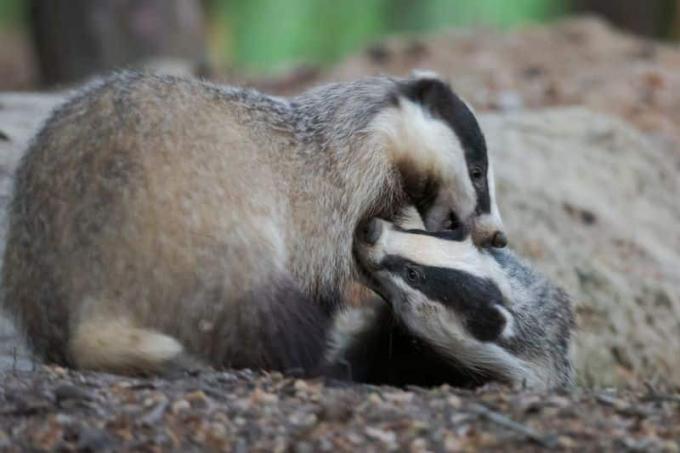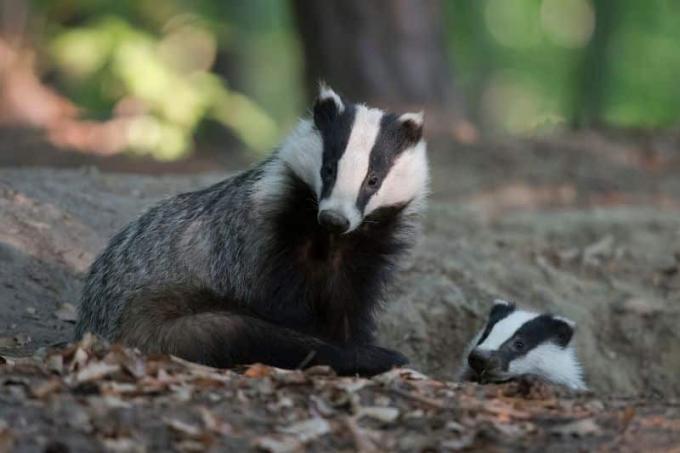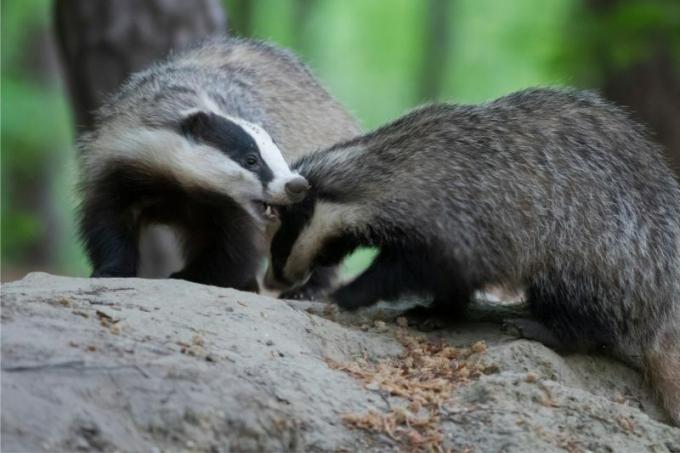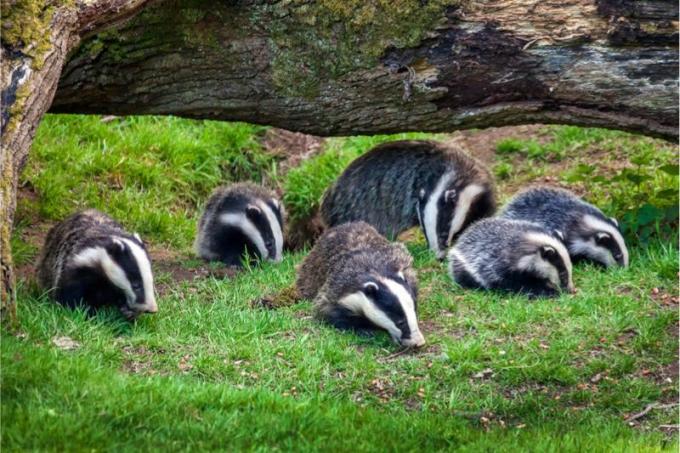
The badger (Meles meles) is mainly active during twilight and night, so its sounds can be heard during this time. The guide explains what they are and why they say them.
In a nutshell
- sixteen different sounds or tones, eleven of which relate to adult animals
- some sounds made equally by badgers and young animals
- Mating sounds possible all year round
Table of contents
- bark
- Hiss
- giggling
- rumbling
- Grunt
- whoosh
- cackling
- buzzing
- panting
- Purr
- badger entertainment
- frequently asked Questions
bark
The bark of a badger (Meles meles) sounds almost like that of a young dog and is also called a bark. It is a bright, short, but also slightly penetrating tone. Both adult badgers and the young can bark for the following reasons:
- Game
- Defense cue when startled
- Surprising situation
- Warning during mating to avoid disturbance from conspecifics

Hiss
The hiss sounds like a cat-like hiss without the voice being used. The tone is sharp with an aggressive undertone and is used to:
- Warning and statement of readiness for defense
- Intimidation of perceived enemies
giggling
Chitter is the technical name of the giggling and appears as a high, relatively short, choppy sound that integrates a plaintive note. The intensity can vary greatly. It indicates the following situations:
- Badger or young animal is in pain (also from female badgers when mating is crowded)
- rare boys in exciting games
- fear and/or frustration
rumbling
When growling (growl), the badger growls in a relatively dark pitch. It's more like a hum. The reasons for the rumbling in the badger can be:
- Marking of territory boundary and warning of intruders
- direct threat from predators such as wolves
- Danger in front of building entrance or near boys
- a cornered badger

Grunt
The so-called grunt can be recognized by a deep, relatively short and dull sound. The juveniles occasionally make this sound several times in a row and it can be reminiscent of a pig's grunt. The grunts are mainly heard in these situations:
- mutual grooming
- Game
- intimate contact

whoosh
Badger wheezing occurs during the mating season, especially in February/March, July and October. Both sexes use the howl as a mating call, while the female also reacts to the painful neck bite with a howl shortly before or during mating. This is a high-pitched, abruptly sharp sound reminiscent of repeated squeaks.
Notice: The whooping of males at mating time is called "Churr" and the whooping of pain and fear is called "Yelp". The latter also includes the sounds of the young, which, however, emit much quieter sounds than the adult animals.
cackling
The cackle resembles a pigeon-like coo, in which the badger emits several short, staccato sounds. But compared to pigeons, they are more elongated. During a fight, the chatter will reach maximum intensity and increase in speed. Badgers cackle in these situations:
- attack
- Battle
- threat
- subservience

buzzing
The buzzing and so-called snarl often follows the rumbling sound when the aggressiveness of the badger increases. This can happen in the following circumstances:
- near threat
- when attacking
panting
Badgers will huff or snort (snort) with a low, nasal sound when overwhelmed. This can be the case, for example, if they are frightened or are surprised by the unforeseen. Incidentally, this happens more often when looking for food.
Notice: Parallel to the snort of the badger, the dorsal fur usually also straightens up. The badger wants to appear larger in order to make an impression and appear threatening.
Purr
The purr becomes "purr" in the badger and is usually only associated with the young. Then it serves as a means of communication for the mother animals to request that they come along or come. But mother badgers also purr when carrying and caring for the young.
badger entertainment
Badgers can also communicate peacefully with one another, which they do primarily within their families. It is spoken of the Badchat. This consists of different sounds with numerous different vowels. The sound sequence of the bad chat is reminiscent of the clucking of ducks.

frequently asked Questions
This varies depending on the reason and situation. They usually chatter the longest. The average time frame is between a few seconds and a minute. The other noises usually pass after a few seconds. If the reason and situation persist for a longer period of time, the noises can be repeated several times.
Almost all of the badger's sounds can be easily distinguished from other animals. Only the spilling is also from foxes, martens and to hear polecats.
Badgers are shy of people and not aggressive towards them. Perhaps you have moved too close to a boy's den. Keep calm and slowly back away from the badger. In daylight you should take a closer look at the location and, if necessary, arrange for an expulsion if there are no badger young that are too small.



